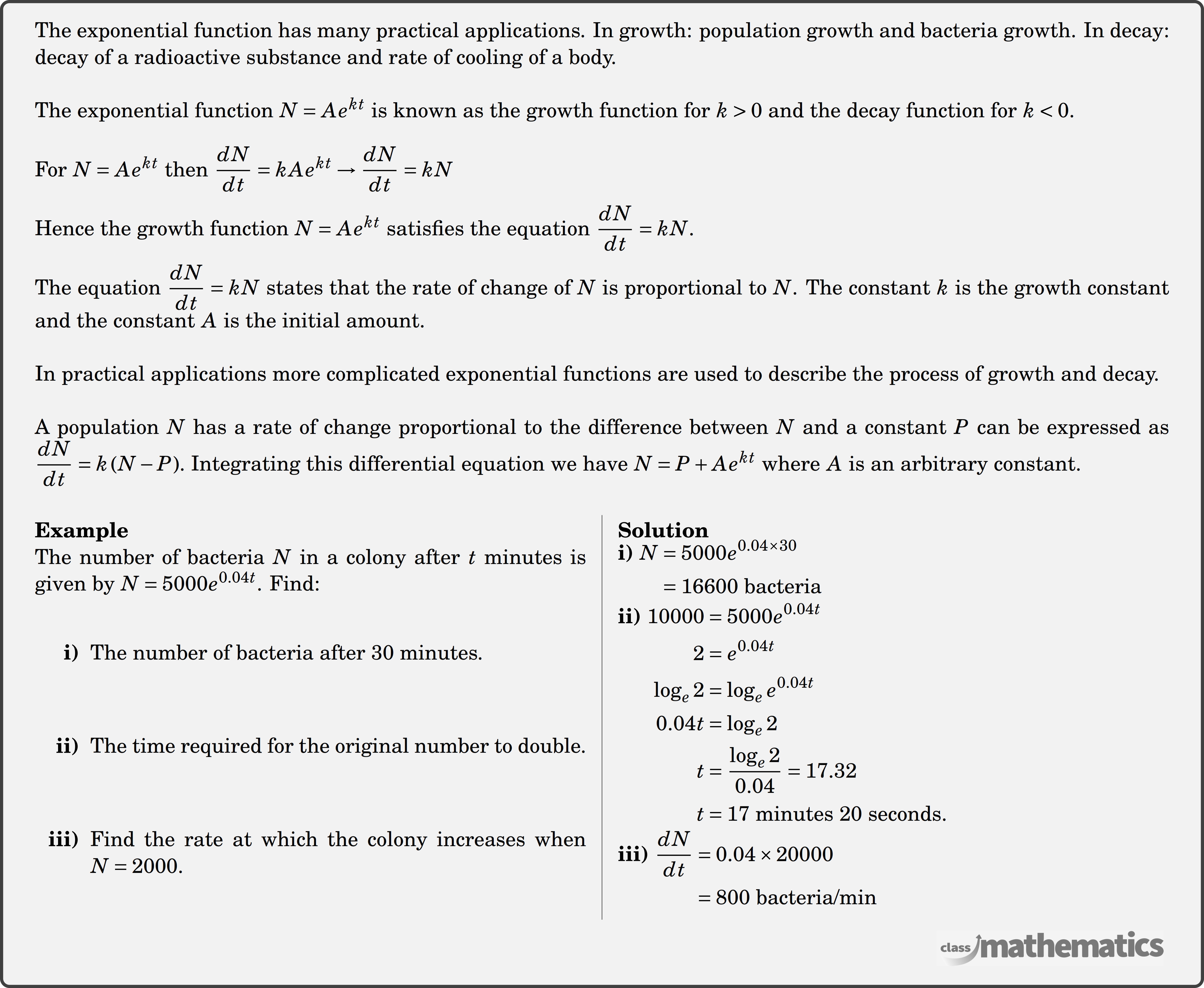Resources for Growth And Decay
-
Questions
41
With Worked SolutionClick Here -
Video Tutorials
2
Click Here -
HSC Questions
5
With Worked SolutionClick Here
Growth And Decay Theory

NSW Syllabus Reference
NSW Syllabus Reference: ME-C1.2: Exponential growth and decay. This will require student to
- construct, analyse and manipulate an exponential model of the form \(𝑁(𝑡) = 𝐴𝑒^{𝑘𝑡}\) to solve a practical growth or decay problem in various contexts (for example population growth, radioactive decay or depreciation)
- establish the modified exponential model, \(\dfrac{𝑑𝑁}{𝑑t}= 𝑘(𝑁 − 𝑃)\), for dealing with problems such as ‘Newton’s Law of Cooling’ or an ecosystem with a natural ‘carrying capacity’
- solve problems involving situations that can be modelled using the exponential model or the modified exponential model and sketch graphs appropriate to such problems
